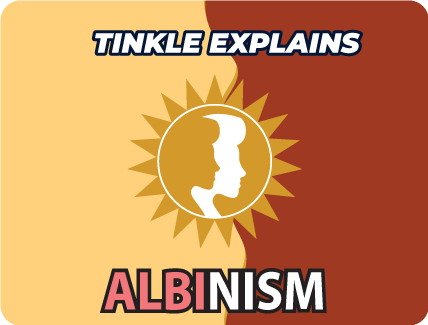

















13 June is observed as Albinism Awareness Day. A person with albinism is usually identified by their white hair and skin and pink eyes. But what is albinism? Let’s learn more about this condition.
Albinism is a hereditary condition. In most cases, both parents will have albinism genes (specific biological units transferred from a parent to their child) that get passed on, even though the parents may not have albinism. It is a lack of pigmentation (melanin) in the skin, hair and eyes. Insufficient awareness of this condition has caused many misconceptions among people. It is important to know that albinism is not a contagious disease, a curse or a sign of being a ghost.
There are two main types of albinism. Oculocutaneous (oh-kyu-lo-kyu-tay-nee-us) albinism affects the skin, hair and eyes of the person. It is the more common type with 1 in 20,000 people being affected by it. The second type is Ocular (oh-kyu-lerr) which affects the eyes. 1 in 50,000 people suffer from this type of albinism.
Albinism is also observed in animals of all kinds.
Albinism has various effects on the people affected by it. The lack of melanin makes them sensitive to bright light and sunlight. This makes most of them visually impaired. People with albinism are also vulnerable to skin cancer. Hence, it is important that they have access to good healthcare.
Vitiligo is a related, non-contagious condition where some areas of the skin lack pigmentation while the other areas don’t. Unfortunately, superstitions about these skin conditions are common and hence those with these conditions are often bullied and even face danger. Remember, they are humans like anybody else and deserve dignity, respect and care.